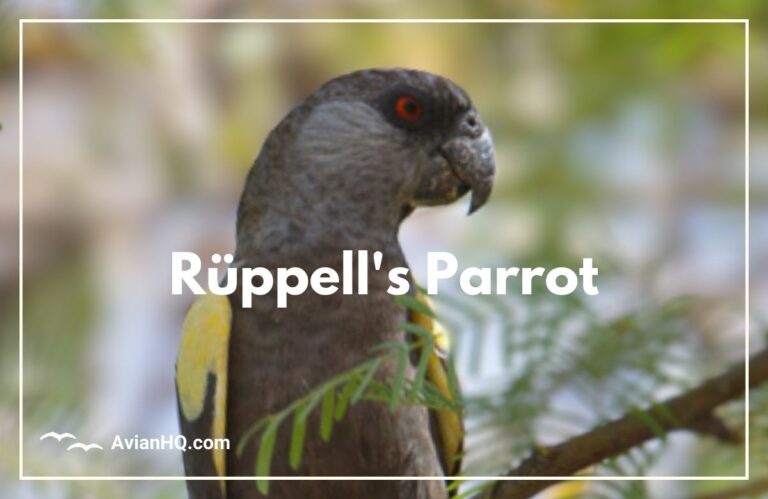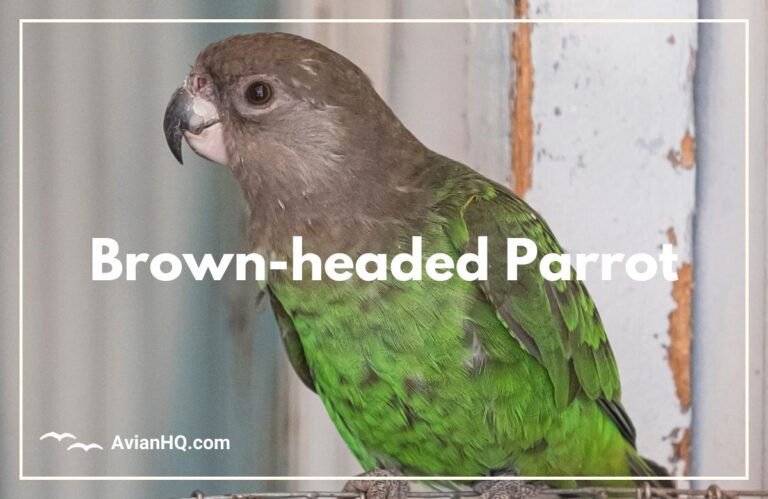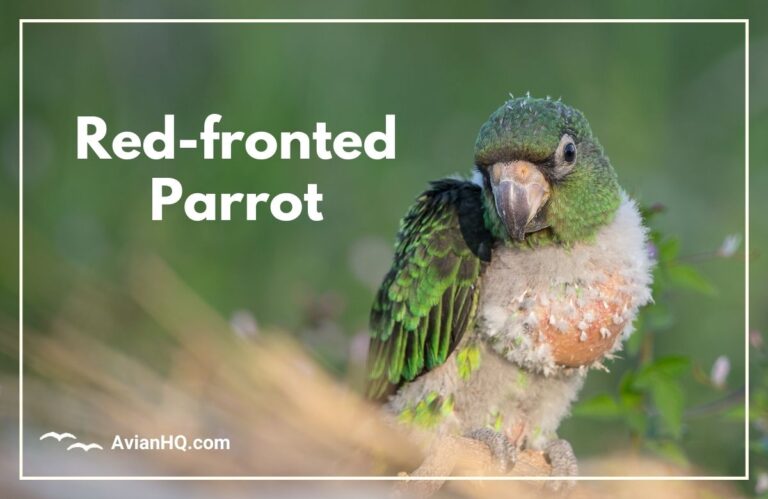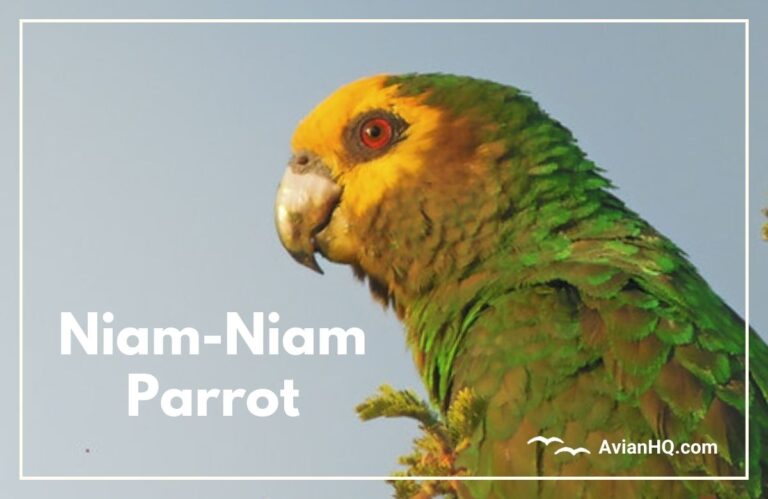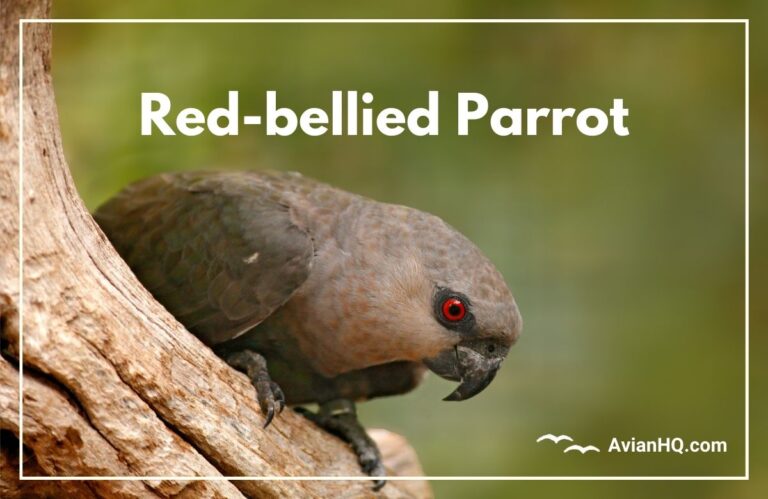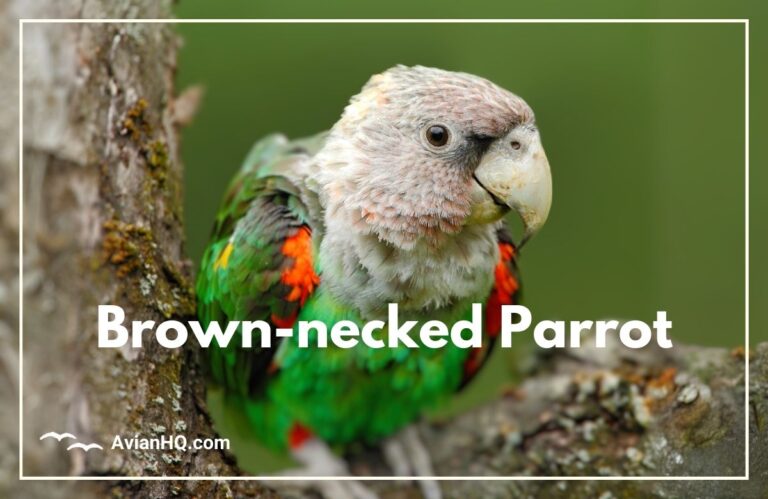Genus: Poicephalus
Have you ever seen a parrot with a large head, stocky body, and short blunt tail? If so, it may have been a Poicephalus parrot. Poicephalus is a genus consisting of 10 parrot species found throughout sub-Saharan Africa.
“Poicephalus parrots are characterized by their sturdy build, thick beaks, and relatively short tails compared to other parrots.”
These medium-sized parrots occupy a variety of habitats across Africa including:
- Tropical rainforests
- Dry savannah woodlands
- Coastal forests
- Agricultural areas
Poicephalus parrots are highly adaptable and intelligent birds. While they may not be as renowned for talking compared to other parrot genera, they can mimic sounds and some species are better talkers than others.
In the wild, these parrots live in small family groups, nesting in tree cavities. Though generally shy, they can become agricultural pests feeding on seeds and fruit crops if food is scarce.
Several Poicephalus species are popular as pets, though some are threatened in the wild by habitat loss and trapping. In this blog post, we’ll explore 10 Poicephalus species and learn more about these fascinating African parrots!
Species Spotlights
The Poicephalus genus contains 10 parrot species. Here is a brief overview of each one:
Red-Fronted Parrot
- Scientific Name: Poicephalus gulielmi
- Size: 9-10 inches (23-25 cm)
- Identifying Features: Mainly green with red/orange on crown, red patch on forehead, grey ear coverts
- Habitat: Forest and woodland areas
- Status: Least Concern
Yellow-Fronted Parrot
- Scientific Name: Poicephalus flavifrons
- Size: 9-11 inches (23-28 cm)
- Identifying Features: Yellow patch on forehead, mostly green plumage
- Habitat: Highland forests in Ethiopia
- Status: Near Threatened, population suspected to be in decline
Brown-Necked Parrot
- Scientific Name: Poicephalus fuscicollis
- Size: 10-12 inches (25-30 cm)
- Identifying Features: Brown back of neck, breast, and belly, green wings and back
- Habitat: Forests and woodlands
- Status: Least Concern
Cape Parrot
- Scientific Name: Poicephalus robustus
- Size: 12-13 inches (30-33 cm)
- Identifying Features: Grey head and neck, green back/wings, yellow sides of neck
- Habitat: Forests in South Africa
- Status: Vulnerable
Meyer’s Parrot
- Scientific Name: Poicephalus meyeri
- Size: 8-10 inches (20-25 cm)
- Identifying Features: Orange-red undertail, green plumage, horn-colored upper mandible
- Habitat: Savannahs and woodlands
- Status: Least Concern
Rüppell’s Parrot
- Scientific Name: Poicephalus rueppellii
- Size: 9-11 inches (23-28 cm)
- Identifying Features: Green back, blue rump/upper tail, silver-grey crown, brown and green scalloping on breast
- Habitat: Dry savannah and open woodland
- Status: Near Threatened due to trapping and habitat loss
Brown-Headed Parrot
- Scientific Name: Poicephalus cryptoxanthus
- Size: 8-10 inches (20-25 cm)
- Identifying Features: Dark grey head, green wings/back, yellow edging on wings
- Habitat: Forests and woodlands
- Status: Near Threatened, suspected population decline
Niam-Niam Parrot
- Scientific Name: Poicephalus crassus
- Size: 9-12 inches (23-30 cm)
- Identifying Features: Mostly green, lighter green forehead, horn-colored upper mandible
- Habitat: Gallery forests and savannahs
- Status: Data Deficient, more research required
Senegal Parrot
- Scientific Name: Poicephalus senegalus
- Size: 8-10 inches (20-25 cm)
- Identifying Features: Green with yellow belly, grey head, black beak
- Habitat: Savannahs and farmland
- Status: Least Concern
Red-Bellied Parrot
- Scientific Name: Poicephalus rufiventris
- Size: 8-10 inches (20-25 cm)
- Identifying Features: Green wings/back, grey head, red/orange belly
- Habitat: Forests and savannahs
- Status: Near Threatened due to trapping for pet trade
Behavior and Intelligence
Poicephalus parrots have some notable behaviors both in the wild and in human care:
Social Habits
- Live in small groups or “families” consisting of a mated pair and their offspring
- Larger foraging groups may form with up to 100 birds when food is abundant
- Roost communally at night in the upper canopy of trees
Communication
- Loud calls as they depart roosting areas at dawn and return at dusk
- Variety of shrieks, squawks, chirps used to keep in contact with flock members
- Mimic human speech and other sounds (some better than others)
Captivity/Care
- Can become nippy if not well-socialized
- Require lots of toys, exercise, mental stimulation
- Prone to obesity and fatty liver disease if fed seed-only diets
Intelligence & Abilities
While not the most renowned talkers:
- Excellent capacity for learning tricks
- Particularly adept at mimicking household sounds like doorbells, phones ringing
- Considered less noisy than many larger parrot species
- Certain species like the Red-bellied can develop vocabularies of a couple dozen words
Overall, Poicephalus demonstrate high intelligence – they just channel it differently than parrots selected more for talking ability over centuries. Their natural behaviors show complex social structures and communication strategies.
Cultural Significance
Poicephalus parrots have been kept as pets for centuries. The Senegal Parrot in particular was noted in European records as early as the 1800s. These parrots continue to be popular companion birds today.
History as Pets
- Long history as pets – over 200 years for Senegal Parrot specifically
- Range of sizes fit well in homes
- Quieter temperaments preferred
- Only the larger Cape Parrot was used for feathers in ceremonial dress
Native Traditions
- Folk tales featuring parrots as tricksters or messengers
- Believed to embody spirits of ancestors in some tribes
- Feathers and imagery used in ritual masks and dress among certain groups like the Bamileke people
Modern Significance
Today, several Poicephalus species remain very popular in the pet trade globally including:
- Senegal Parrot
- Meyer’s Parrot
- Red-bellied Parrot
- Brown-Headed Parrot
However, wild populations of some species are threatened by illegal trapping to supply the continued demand. Public education is critical to ensure these parrots don’t disappear from Africa’s forests.
Threats and Conservation
While some Poicephalus populations remain stable, others face serious threats:
Habitat Loss
- Deforestation for timber and agricultural land
- Up to 80% loss of natural habitat in some range areas
- Leads to fragmented populations
Trapping/Pet Trade
- 475,000+ legally exported 1981-2020
- Unknown numbers smuggled illegally
- Reduces wild populations and genetic diversity
Disease
- Particularly problematic in endangered Cape Parrots
- 60%+ infection rate with Psittacine Beak and Feather Disease
- Causes sickness, death, reduced breeding success
Conservation Status
| Species | IUCN Status | Population Trend |
|---|---|---|
| Red-fronted | Least Concern | Decreasing |
| Yellow-fronted | Near Threatened | Suspected decreasing |
| Brown-necked | Least Concern | Stable |
| Cape | Vulnerable | 1,500 remaining |
| Meyer’s | Least Concern | Stable |
| Rüppell’s | Near Threatened | Decreasing |
| Brown-headed | Near Threatened | Suspected decreasing |
| Niam-Niam | Data Deficient | Unknown |
| Senegal | Least Concern | Decreasing due to trapping |
| Red-bellied | Near Threatened | Decreasing due to trapping |
Clearly, while some Poicephalus parrots remain widespread, increased conservation action is urgently needed for species like the Cape and Red-bellied Parrots. Public education also plays a key role.
Conclusion
Poicephalus parrots are a fascinating group of African parrots. Characterized by their stocky build, large beaks, and short blunt tails, these intelligent and adaptable birds occupy diverse habitats.
While the genus contains 10 species, their conservation status varies widely. From vulnerable Cape Parrots struggling with less than 1,500 remaining individuals to widespread Senegal Parrots, some Poicephalus have increasing threats.
Habitat loss and trapping for the pet trade impact certain species. However, those that can thrive alongside human settlement have been kept as pets for centuries.
- Popular companion birds include the Senegal, Meyer’s, Red-bellied and Brown-headed Parrots.
Going forward, conserving Poicephalus diversity in the wild while sustaining captive populations requires public education. Teaching buyers only to purchase captive-bred birds helps protect wild populations.


